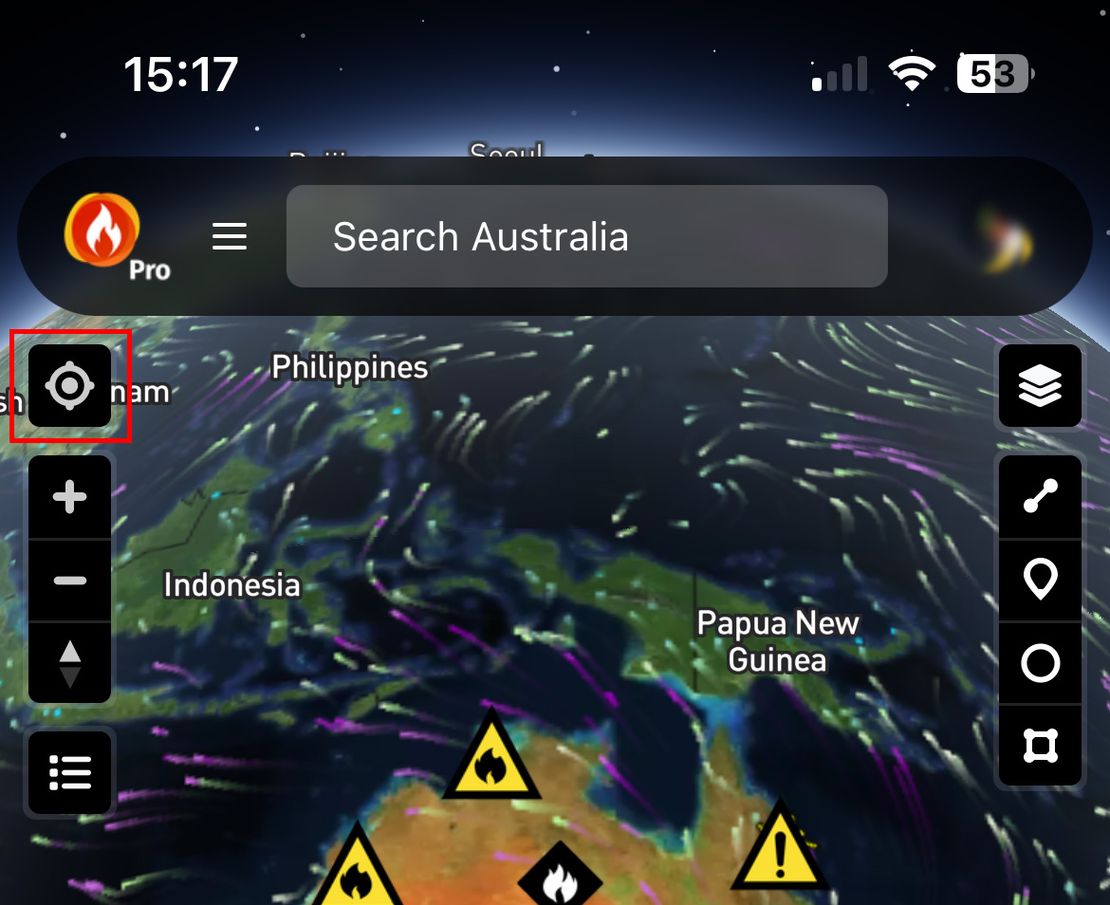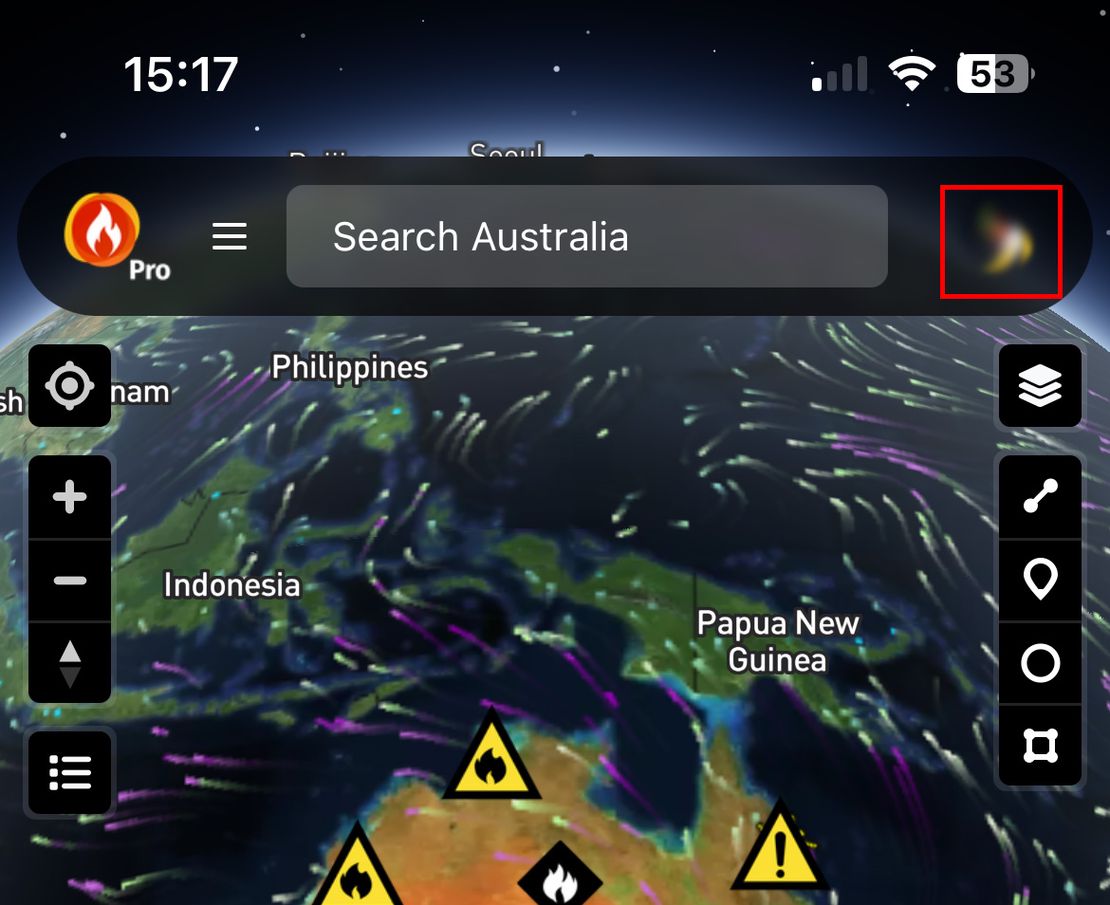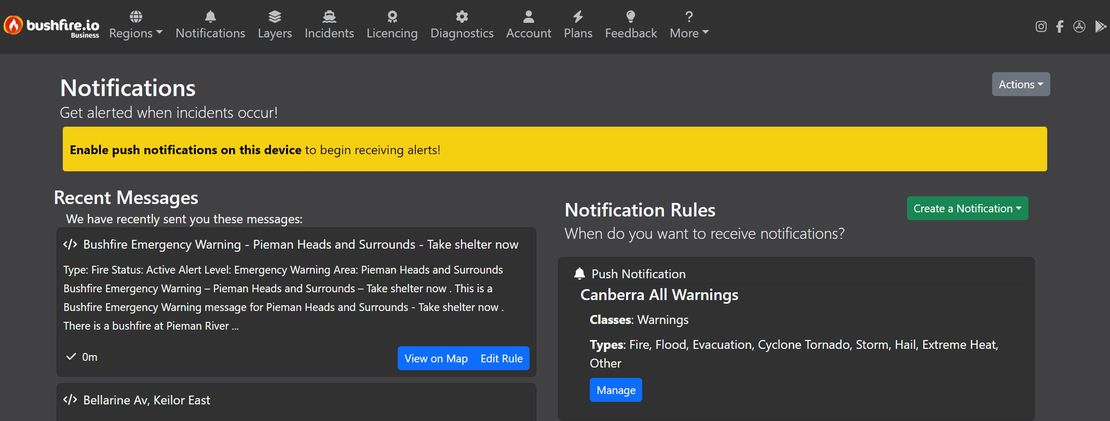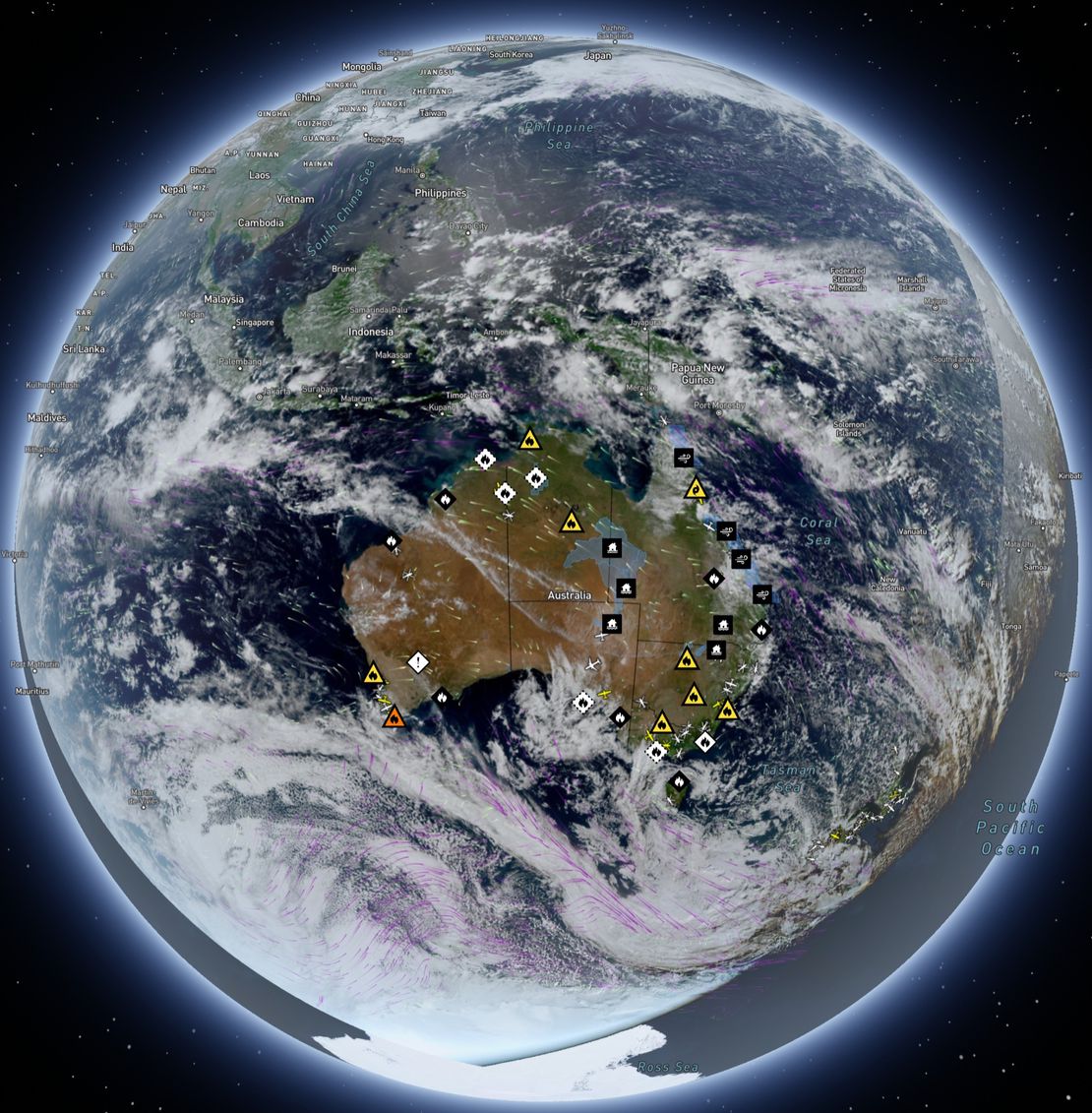
How-to use Satellite Imagery
- Disaster Science
- Bushfire.io pro
- December 14, 2023
Table of Contents
Geostationary satellite imagery, like that from Himawari-9, works like a super powerful camera in space that’s always looking at the same spot on Earth. Imagine it’s like a balloon that never moves and is always watching over your house and street. This satellite takes many pictures and sends them back to us, showing clouds, storms, and fires from high above.
Info
Requires a subscription to Bushfire.io Pro, Business or Enterprise.
These satellites use different types of light to see the world, some of which are invisible to our eyes. For example, the True Colour images use red, green, and blue light, similar to how our eyes see, to create pictures that show what Earth looks like from space.
But satellites can also see things like heat or different types of light that our eyes can’t detect. To show these, we use False Colour. This means we assign colors we can see, like red or blue, to represent these invisible types of light. This helps us understand the images better, like showing where it’s really hot or where different kinds of clouds are in the sky.
Satellites We Use for Imaging
Himawari-9
- Positioning: Located over the Western Pacific, ideal for Asia-Pacific region monitoring.
- Resolution: Captures high-resolution images, providing detailed earth observations, up to 500m.
- Frequency: Images updated every 10 minutes for near real-time environmental monitoring.
- Operator: Operated by the Japan Meteorological Agency, contributing to global weather surveillance and natural disaster tracking.
- Mission: Essential for tracking weather systems, aiding in forecasting and disaster response.
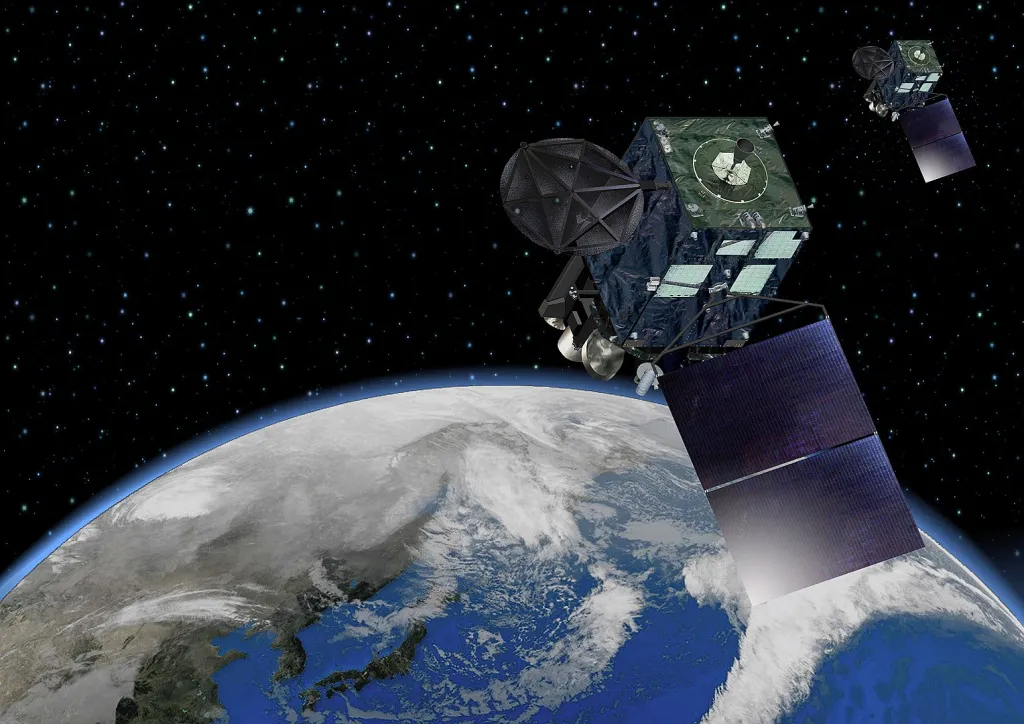 Japan Meteorological Agency Rendering of Himawari 8/9 (CC-BY-SA)
Japan Meteorological Agency Rendering of Himawari 8/9 (CC-BY-SA)
Goes-West
- Positioning: Providing coverage of the western United States, eastern Pacific Ocean, and parts of Australasia.
- Resolution: Captures high-resolution imagery, including up to 500m for visible bands, supporting detailed views of oceanic and atmospheric conditions.
- Frequency: Updates imagery every 5 to 10 minutes, with mesoscale sectors enabling 1-minute scans for fast-evolving events like wildfires and cyclones.
- Operator: Managed by NOAA under the GOES-R satellite program, working in tandem with GOES-East for full hemispheric coverage.
- Mission: Vital for tracking Pacific weather systems, volcanic activity, marine hazards, and supporting emergency response efforts on the western rim of the Americas.
Goes-East
- Positioning: Placed to monitor the eastern United States, Atlantic Ocean, and much of South America.
- Resolution: Provides high-resolution imagery, including 500m resolution for visible bands, enabling detailed monitoring of cloud patterns, storms, and land features.
- Frequency: Delivers imagery every 10 minutes, with rapid scan modes offering 1-minute updates for high-impact weather events (not used currently).
- Operator: Operated by the National Oceanic and Atmospheric Administration (NOAA) of the United States as part of the GOES-R series.
- Mission: Supports weather forecasting, severe storm tracking, fire detection, and environmental monitoring across the Americas and Atlantic basin.
Layers Available in Bushfire.io Pro
True Colour
- Replicates natural colours of the Earth and is useful for visualising weather systems, smoke from fires etc.
- Interpreting Images: Natural colour representation.
- Be aware: Cloud mass may cover vast areas at once which can show as white, and obviously it doesn’t work at night…
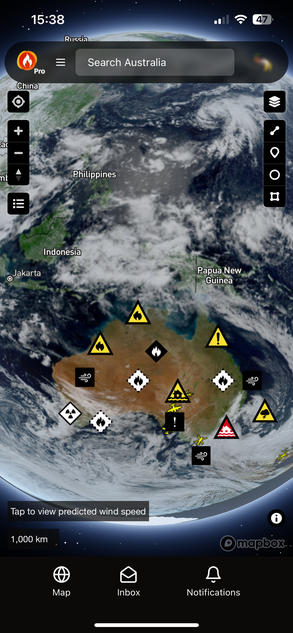
Infrared Cloud Imagery
- Infrared imagery for cloud cover is used to identify cloud coverage and temperature.
- Interpreting Images: Cooler colours indicate higher, colder clouds.
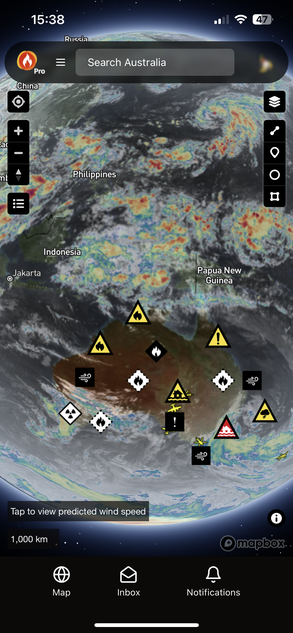
Cloud Type Identification
- Classifies cloud types for understanding weather patterns.
- Interpreting Images: Different colours represent various cloud types.

Storm & Convection Zones
- Highlights areas of storm activity which is useful for tracking storm development.
- Interpreting Images: Intense colours indicate stronger storm activity.
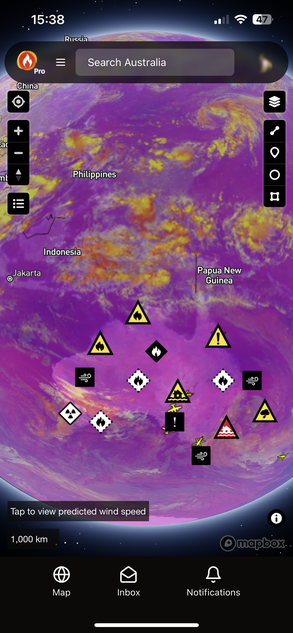
Fire Heat Intensity
- Detects heat from fires to monitor fire intensity and spread.
- Interpreting Images: Warmer colours show intense heat areas.
- Be aware: Himawari 8/9 has an operational resolution of up to 500m/pixel, this means a fire usually has to be greater than 500m to be visible.
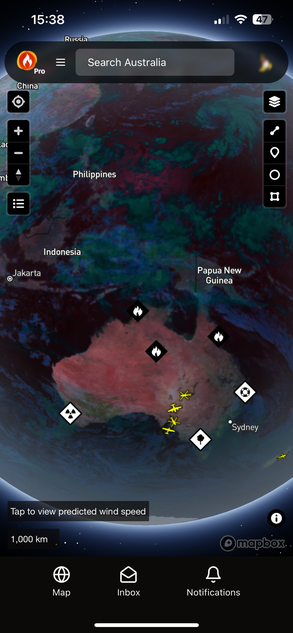
Daytime Cloud Analysis
- Detailed cloud imagery for daytime for daytime weather monitoring.
- Interpreting Images: Variations in cloud thickness and type.
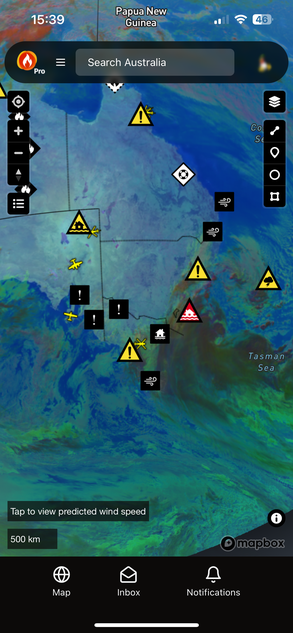
Night Cloud Analysis
- Cloud monitoring during night for nighttime weather anaysis.
- Interpreting Images: Different shades indicate cloud coverage at night.
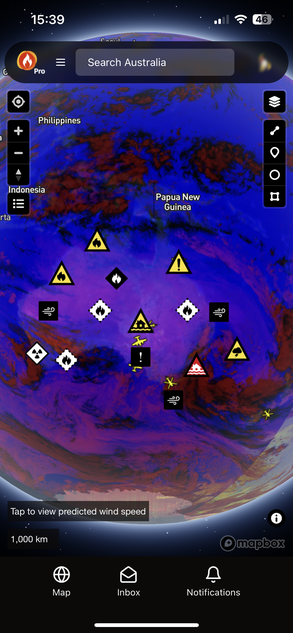
Dust
- Highlights airborne dust, dust storms and air quality.
- Interpreting Images: Dust presence shown in distinct colours.
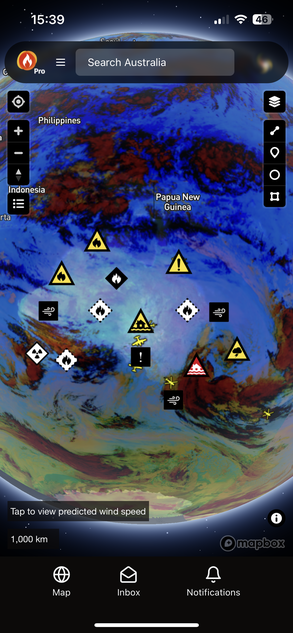
Enabling Real-Time Imagery in Bushfire.io Pro
Info
Requires a subscription to Bushfire.io Pro.
- To enable real-time imagery in Bushfire.io Pro, you need to open the right-side menu and choose which layer to enable.
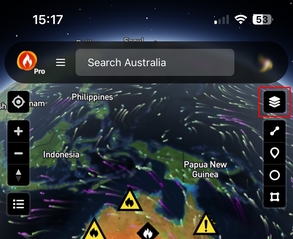
- Select which layer to enable.
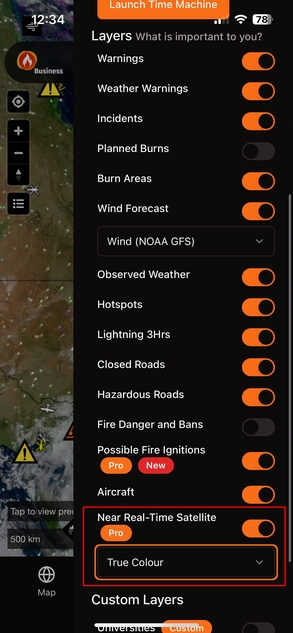
- Near real-time satellite imagery will only be shown at higher zoom levels (when you’re zoomed out beyond town level (zoom levels 0-7 or 8).
